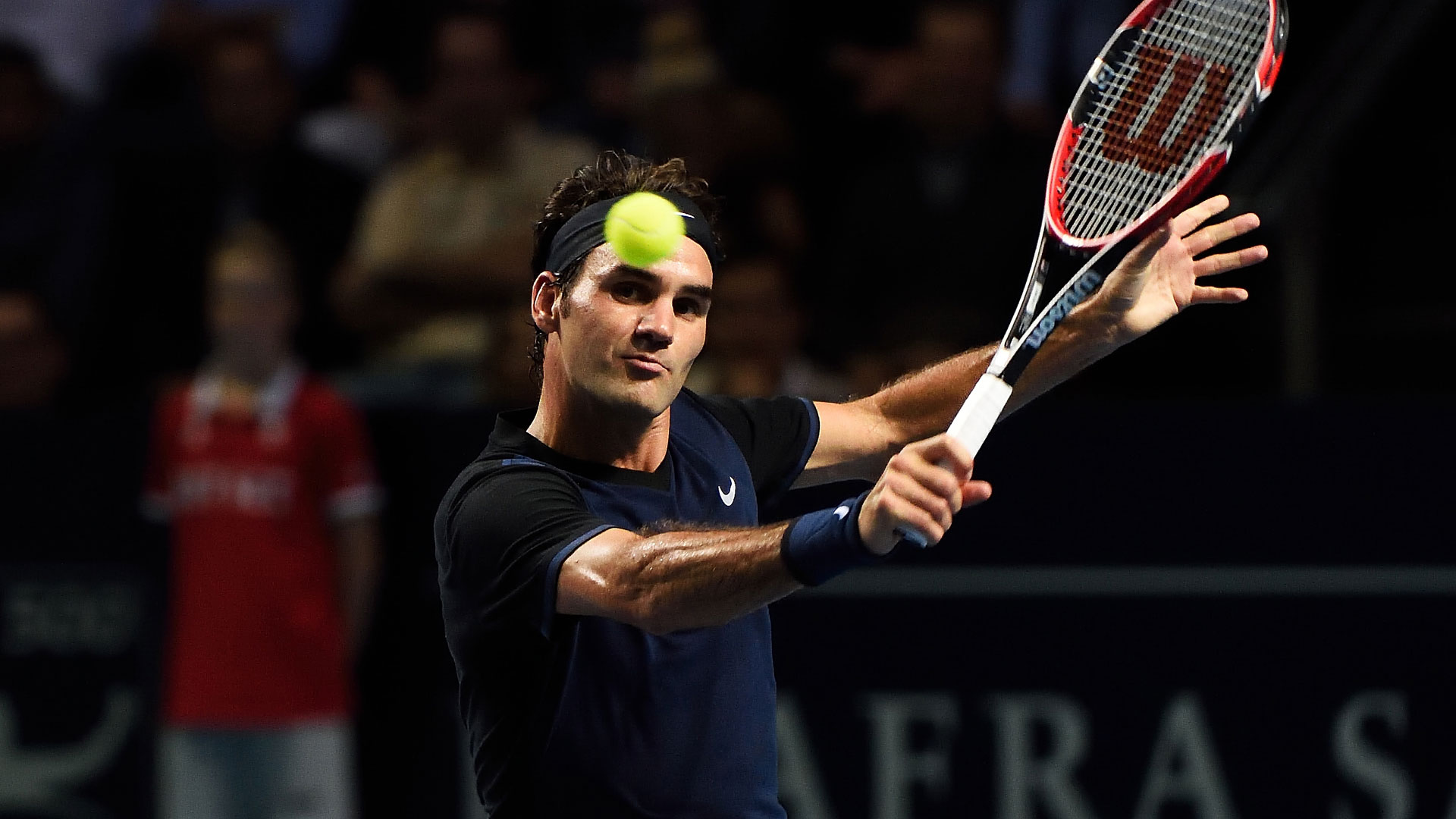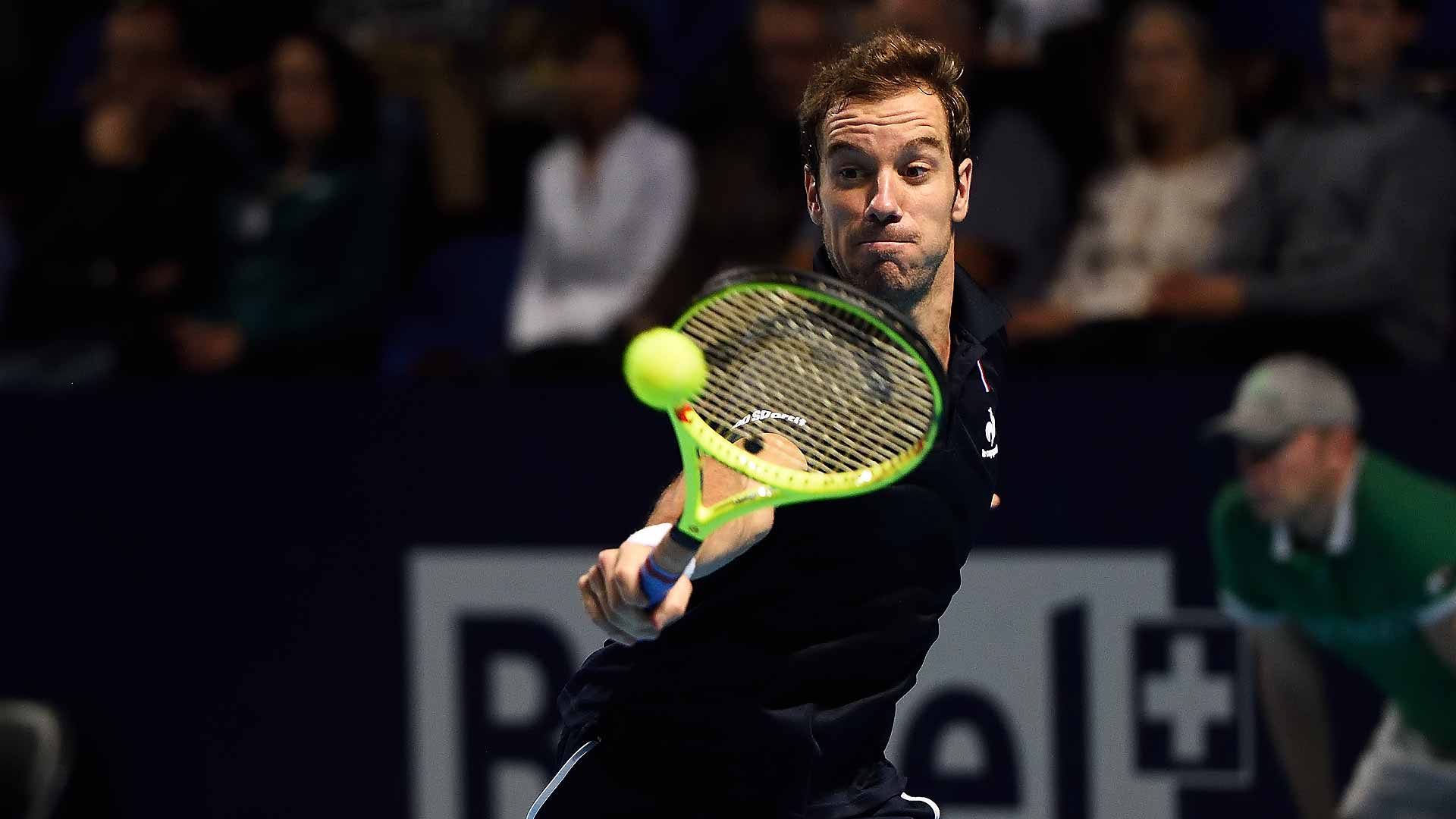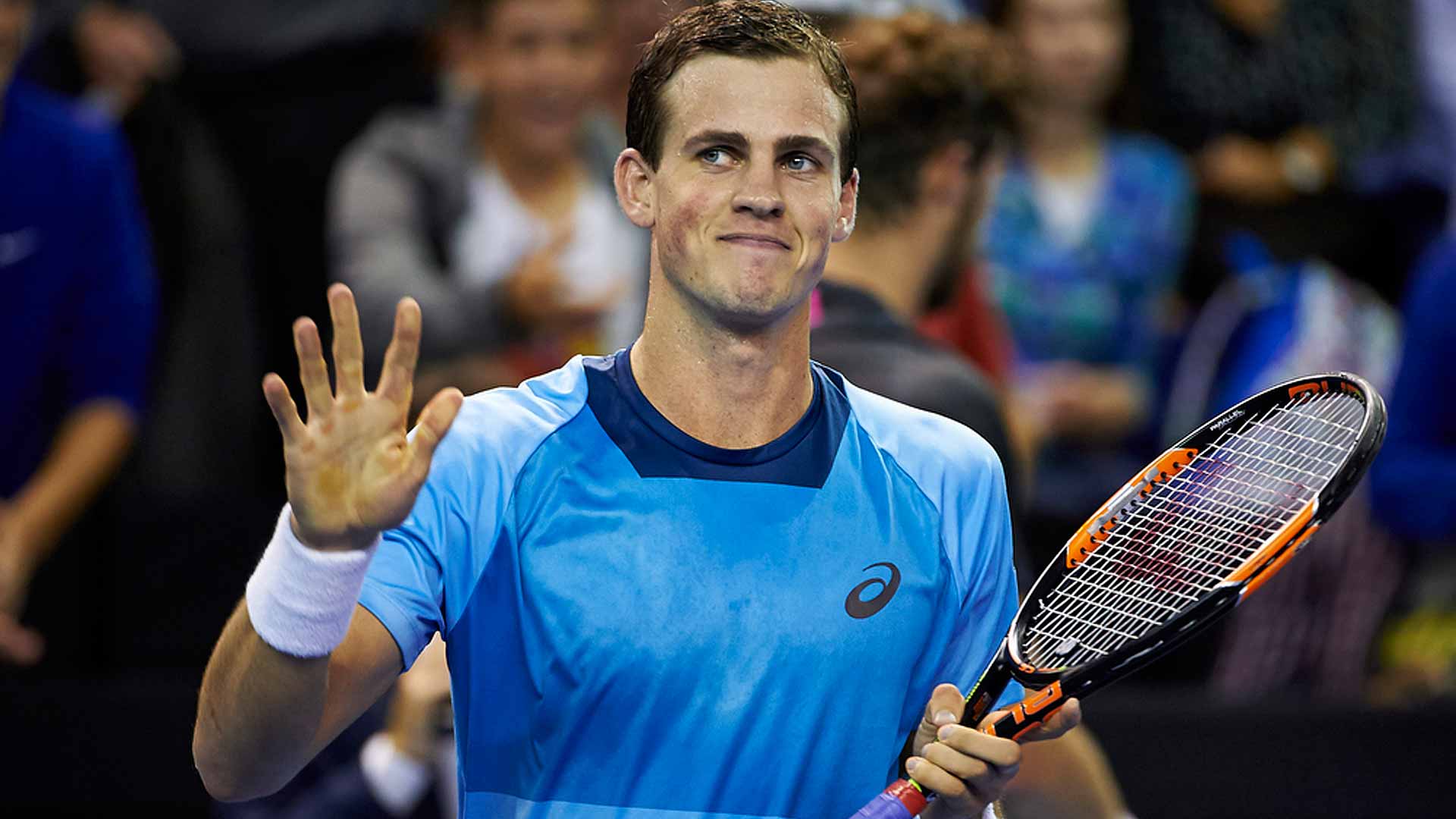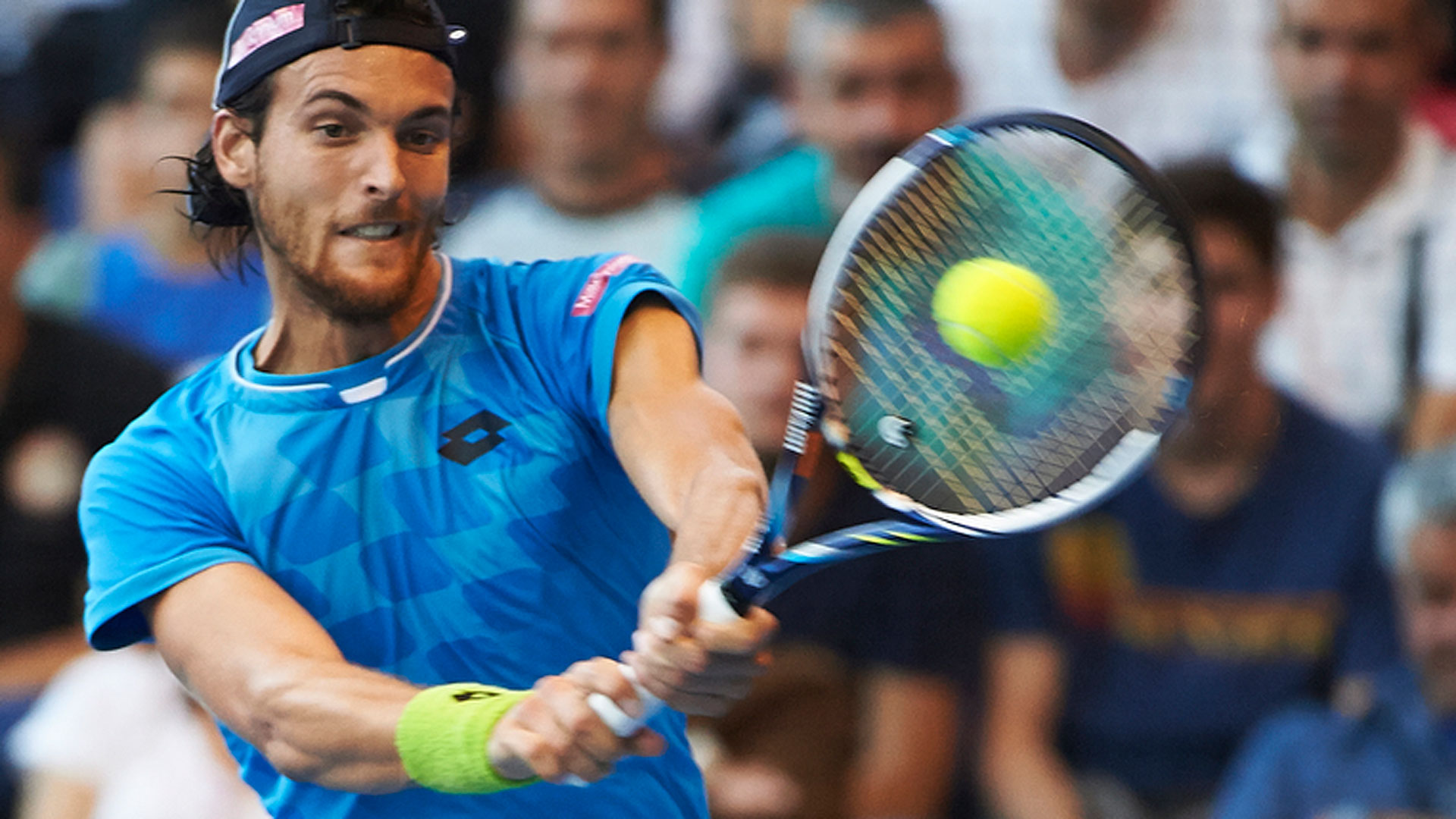Federer Sets Sock Semi-final
In a rematch of the 2014 final, hometown favorite and top seed Roger Federer defeated No. 8 seed David Goffin of Belgium 6-3, 3-6, 6-1 on Friday to return to the semi-finals of the Swiss Indoors Basel.
Goffin, 24, fell to 1-21 against Top-10 competition, his lone win coming against Milos Raonic in the Basel quarter-finals last year.
“I know David quite well, even though we’ve only played three times now,” said Federer. “He came to Dubai last year and we practiced together. I knew what he could do, so I wasn’t surprised in the match today when he was returning easily, taking the ball on the rise and distributing it left and right with the forehand. We found great rhythm in the second set and in the third it was up to me.”
It was the Belgian, who grew up idolising Federer and even plastered his bedroom walls with posters of the Swiss superstar, who flinched first as he was broken to go down 2-4 in the opening set. The World No. 3 would cement the break and Goffin was soon trailing by a set.
There would be three straight breaks of serve though the first six games of the uneven second set. Goffin would eventually take control at 5-2, two games later forcing a third set. Federer’s 14 unforced errors proved his undoing.
The 34-year-old Federer righted his ship in the final set and went on to earn his 56th win of the year. He is now 59-9 lifetime in his hometown.
Goffin, No. 17 in the Emirates ATP Rankings, is still seeking his first title since winning Metz in 2014.
Federer will next face Jack Sock, who rallied from a set down to defeat Donald Young 5-7, 6-4, 6-2, becoming the ATP World Tour 500-level event’s first American semi-finalist since Andy Roddick in 2010.
“It feels great. I didn’t expect to play three Americans in a row coming over here to Europe in the fall,” said Sock, who earlier downed Denis Kudla and John Isner. “But it’s good for American tennis. Unfortunately, I had to play three friends in a row. But it feels good to be in my first semi.”
This was new territory. In fact, the last time two American players reached the Basel quarter-finals was back in 1994, when Federer served as a ballboy for Patrick McEnroe and Jared Palmer.
After falling behind 0-2 in this first tour-level meeting between these compatriots, Young reeled off three straight games to work himself back into the first set and went on to claim the opener, breaking his opponent at love with Sock serving at 5-6. Sock would commit 17 unforced errors in dropping the set.
Young again fell behind in the second set, 0-3, but the 26-year-old left-hander would battle back to level at 4-all. However, Sock, 23, responded with a break in the ninth game, and went on to force a third set.
The now-familiar pattern repeated itself in the final set, Sock breaking his Davis Cup teammate en route to a quick 2-0 edge. This time there would be no comeback for Young, still seeking his first ATP World Tour title. He fell below the .500 mark with the loss at 22-23 on the year.





